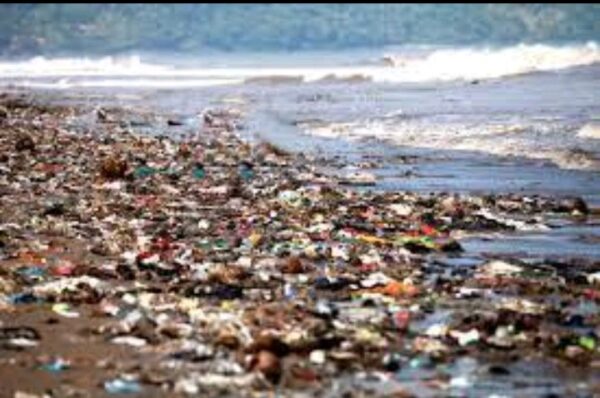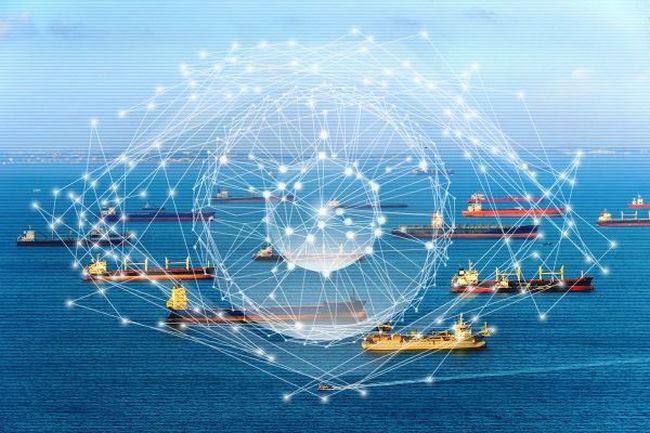Roles Of International Organisations In Preventing Pollution Of Seas- IMO Example
This is an extract from a paper titled; “Water Transportation and Environmental Degradation Quagmire: The Role of International Agencies in Sustainable Environment and Development” by Prof. Bamidele Badejo.
Please note that the subsequent discussion on the activities of the IMO that is presented hereafter is an earlier discussion of the Secretary General of the IMO in 2016 which is very instructive, informative and current to our discussion. It forms the bedrock of the roles and activities of the Organisation effort at mitigating marine environment degradation and by implication ensuring overall sustainable quality and safe water transportation.”
Shipping is a key user of the oceans, delivering more than 80 per cent of world trade, taking ferry passengers to their destinations and carrying millions of tourists on cruises. Annually, more than 50,000 seagoing ships carry between them more than 10 billion tons of vital and desired cargoes, including commodities, fuel, raw materials and consumer goods. As the United Nations agency responsible for developing and adopting measures to improve the safety and security of international shipping and to prevent pollution from ships, the International Maritime Organization (IMO) has an integral role in meeting the targets set out in United Nations Sustainable Development Goal (SDG) 14: Conserve and sustainably use the oceans, seas and marine resources for sustainable development.
The increase in the number and the size of ships and the volume of cargo carried over the past five decades has gone hand in hand with the work of IMO, through its 172 member States, to create the legal and technical framework within which shipping has become progressively cleaner and safer. Of course, there remains work to be done. IMO will continue its efforts, in partnership with member States and other organizations, to implement and support the enforcement of its regulations. Formed by means of the 1948 Convention on the International Maritime Organization, IMO initially focused on maritime safety and navigation. Then, in the 1960s, the world became more aware of the spillage of oil into the oceans and seas through accidents or as a result of poor operating practices. Spurred by major oil pollution incidents, such as the Torrey Canyon disaster off the south-west coast of the United Kingdom in 1967, IMO embarked on an ambitious programme of work on marine pollution prevention and response, and on liability and compensation issues. A key outcome was the adoption, in 1973, of the International Convention for the Prevention of Pollution from Ships, universally known as MARPOL.
From the start, MARPOL addressed not just pollution by oil from ships (covered in Annex I) but also noxious liquid substances, such as chemicals, carried in bulk (Annex II); harmful substances carried in packaged form (Annex III); sewage discharges into the sea (Annex IV); and the disposal at sea of ship-generated garbage (Annex V). Under Annex V, a general prohibition applies to discharging all garbage from ships, while discharging plastics is subject to a total, globally applicable ban. Later, in 1997, IMO added a new Annex VI to MARPOL dealing with atmospheric pollution from ships. Today, Annex VI addresses air pollution from sulphur and other harmful emissions, such as nitrogen oxides and particulate matter. In 2011, IMO became the first international regulator for a transport sector to adopt globally binding energy efficiency requirements, which apply to all ships globally, regardless of trading pattern or flag State, aimed at reducing greenhouse gas emissions from international shipping.
MARPOL Annex VI also incorporates regulations for ozone-depleting substances, volatile organic compounds, shipboard incinerators, reception facilities and fuel oil quality. All these measures have a significant, beneficial impact on the atmospheric environment, and also on human health for people living in or near port cities and coastal communities. Under MARPOL Annex VI, Emission Control Areas (ECAs) for sulphur oxide and nitrogen oxide emissions have been designated, with a strict 0.10 per cent by mass (m/m) limit on sulphur in fuel oil. In a move that demonstrates a clear commitment by IMO to ensuring that shipping meets its environmental obligations, the global sulphur limit outside ECAs will be cut to 0.50 per cent m/m, from 3.5 per cent m/m, from 1 January 2020.
Today, the expanded, amended and updated MARPOL Convention remains the most important, as well as the most comprehensive, international treaty covering the prevention of both marine and atmospheric pollution by ships, from operational or accidental causes. By providing a solid foundation for substantial and continued reductions in ship-source pollution, the Convention continues to be relevant today.
MARPOL also recognizes the need for more stringent requirements to manage and protect so-called Special Areas, due to their ecology and their sea traffic. A total of 19 Special Areas have been designated. They include enclosed or semi-enclosed seas, such as the Mediterranean Sea, Baltic Sea, Black Sea and Red Sea areas, and much larger ocean expanses such as the Southern South Africa waters and the Western European waters. This recognition of Special Areas, alongside global regulation, is a clear indication of a strong IMO awareness of-and total commitment to-the fundamental importance of protecting and preserving the world’s seas and oceans as vital life support systems for all peoples.
The Antarctic has enjoyed Special Area status since 1992. Oily discharges into the sea and garbage disposal overboard are totally prohibited. In addition, a total ban on the carriage or use of heavy fuel oils took effect on 1 August 2011 under a new MARPOL Annex I regulation. Polar waters also benefit from special measures under the IMO Polar Code, which entered into force on 1 January 2017 for ships operating in both Antarctic and Arctic waters. IMO also has a process to designate Particularly Sensitive Sea Areas (PSSAs), which are subject to associated protective measures, such as mandatory ship-routeing systems. There are currently 14 areas (plus two extensions) protected in this way, including those covering UNESCO World Heritage Marine Sites, such as the Great Barrier Reef (Australia), the Galápagos Archipelago (Ecuador), the Papahānaumokuākea Marine National Monument (United States of America), and the Wadden Sea (Denmark, Germany, the Netherlands). This long-established practice of designating Special Areas and PSSAs fully supports the SDG 14 target to increase coverage of marine protected areas.
While MARPOL specifically targets accidental and operational discharges from ship operations, IMO also actively addresses marine pollution from land-based sources, albeit indirectly, through the London Convention on the Prevention of Marine Pollution by Dumping of Wastes and Other Matter, 1972, and its 1996 Protocol. The Protocol adopts a precautionary approach, prohibiting the discharge of wastes at sea except for a few specified on a list of permitted wastes, such as dredged material.
The London Convention and Protocol regime also contributes to climate change mitigation by regulating for carbon capture and sequestration in subsea geological formations and providing regulations and guidance on how to assess proposals for marine geo engineering.
The process of adopting all these measures at IMO begins with structured fora, in which member States debate, agree and adopt universal measures aimed at safe and sustainable shipping with minimal adverse environmental impact.
The essential path to implementation then follows. IMO works with various stakeholders and partners to build capacity and expertise among its member States to write IMO standards into their own national maritime legislation, and then to implement and enforce that legislation effectively.
IMO has a long history of working with key donors, including the European Union, the Global Environment Facility (GEF), the Norwegian Agency for Development Cooperation, the Korea International Cooperation Agency, and shipping and maritime organizations such as IPIECA, the global oil and gas industry association for environmental and social issues. A large number of marine environmental projects have been implemented, with support from a range of regional organizations, including the Secretariat of the Pacific Regional Environment Programme, the Regional Marine Pollution Emergency Response Centre for the Mediterranean Sea, the Regional Organization for the Conservation of the Environment of the Red Sea and Gulf of Aden, the Regional Organization for the Protection of the Marine Environment, the Commission on the Protection of the Black Sea Against Pollution, and the South Asia Co-operative Environment Programme.
IMO has pioneered a series of projects based on a global partnership model known as Glo-X, which is being used to accelerate legal, policy and institutional reforms in developing countries to implement international conventions while, at the same time, leveraging private sector partnerships to accelerate research and development and technological innovations by forming global industry alliances and facilitating information exchange.
The GloBallast Partnerships Project (2007-2017), a joint initiative of GEF, the United Nations Development Programme (UNDP) and IMO, has been successful in assisting developing countries in reducing the transfer of potentially harmful aquatic organisms and pathogens in ships ballast water and implementing the IMO Ballast Water Management (BWM) Convention. The BWM Convention will enter into force in September 2017 and will require ships to manage their ballast water to avoid the transfer of harmful aquatic organisms and pathogens, and protect the marine environment, human health, property and resources.
A second global partnerships project is the GEF-UNDPIMO Global Maritime Energy Efficiency Partnership project (GloMEEP), which is working in 10 lead pilot countries (Argentina, China, Georgia, India, Jamaica, Malaysia, Morocco, Panama, Philippines and South Africa). It aims to create global, regional and national partnerships to build capacity to address maritime energy efficiency—in other words, to address greenhouse gas emissions from ships—and for countries to bring this into the mainstream within their own development policies, programmes and dialogues.
Another current project, funded by the European Union, is the Global Maritime Technology Cooperation Centre (MTCC) Network (GMN), which is establishing a global network of five MTCCs in Africa, Asia, the Caribbean, Latin America and the Pacific. The aim is to help beneficiary countries limit and reduce greenhouse gas emissions from their shipping sectors. The project will encourage the uptake of energy efficiency technologies through the dissemination of technical information and know-how.
Through this network of MTCCs, the project will enable developing countries in these regions, and in particular, least developed countries and Small Island developing States, to effectively implement energy efficiency measures in maritime transport through technical assistance and capacity building. Both the GloMEEP and GMN projects will support IMO member States in climate change mitigation, the key aim of SDG 13. In other oceans-related partnerships, IMO is a partner in, and secretariat for, the Joint Group of Experts on the Scientific Aspects of Marine Environmental Protection (GESAMP), which advises the United Nations system on scientific components of marine environmental protection. GESAMP evaluates the environmental hazards of harmful substances carried by ships and reviews applications for “active substances” to be used in ballast water management systems, thereby providing inputs into the regulatory process at IMO. GESAMP also provides a systematic overview of new and emerging issues to inform its nine sponsoring United Nations organizations.
Recent key reports by GESAMP on micro plastics in the oceans have contributed to the widening knowledge of the sources and fate of marine litter, specifically micro plastics, in the oceans. IMO is also a co-lead for sea-based sources of marine litter, together with the Food and Agriculture Organization of the United Nations, in the Global Partnership on Marine Litter, which is managed by the United Nations Environment Programme.
The IMO track record in minimizing pollution from ships, both into the seas and oceans and into the atmosphere, speaks for itself. The Organization is fully committed to working through its member States and with its partners to continue to develop, maintain and implement a set of global regulations to ensure shipping’s sustainable use of the oceans.
However, the summary of the overall roles as enumerated above are as itemized below:
· Standardization and Quality Control and Compliance
· Regulating, Legislating, Sanctioning and Prosecuting
· Management / Administration and Cooperation
· Fund and Finance Sourcing
· Inventory / Stock taking and Data Banking and Management
· Research / Development and Technology Deployment
· Advocacy / Enlightenment, Education and Partnering
· Capacity Building and Human Resource development
· Coordination and collaboration with various Regional Programmes Agencies and Partners.
Recommendations
Drawn from the discussions, it is imperative to continue to focus attentions on how best to manage human activities and their relationship or consequences on water transportation. This is very desirable if the environmental degradation worries are to be mitigated. This is to recommend that government should reevaluate, revalue and restructure the entire processes in place to ensure sustainable water transportation. Hence, there is increasing need for surveillance, monitoring, and promoting compliance with extant regulations and standards which are collectively initiated and endorsed for implementation. Again, there is need to intensify efforts and increase the tempo of public engagement, publicity, advocacy and enlightenment. Continue to invest on research and development in areas where innovative mitigating solutions and containment efforts are developed as response to the challenges of marine environment degradation. Focus on digital technology and information sharing are germane. Deliberate promotion of cooperation and collaboration amongst stakeholders and regional governments for improved response at curtailing the incidence of environmental degradation associated to the various water transportation modes. Therefore building a strong handshake devoid of political maneuvering resulting to the ‘strong’ and the ‘weak’ tendency should be minimized or avoided.
Conclusion
This discussion concludes that there is available information and committed efforts at ensuring that the consequential activities of man have serious effects on the water transportation mode and therefore mitigating measures are to be evoked to protect the human race from self destruction and annihilation. However, because the degradation effects transcends across nations, there is need to promote collaboration, cooperation, supports (both human capacity, technology and finance where applicable) and good governance.








